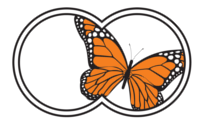This program was initiated in 1991 at what is now the Occoquan Bay National Wildlife Refuge (OBNWR) just south of Washington DC. The endeavor began as a collaborative effort between the Virginia Native Plant Society (VNPS) and the Fairfax Audubon Society (now Audubon Society Northern Virginia or ASNV). In 1996, two more areas were added (Occoquan Regional Park and Meadowoods Management Area). And finally in 2001 a route was added at Metz Wetlands. This project is focused on protected lands in this limited area. Future sites may include the Featherstone National Wildlife Refuge just south of Occoquan NWR. The surveys were primarily focused on helping to direct restoration and conservation efforts. Although not a standard "Pollard" design, it has many of the key features of that monitoring protocol - survey routes are established and the same routes are walked each time at a consistent pace. Surveys that primarily focus on butterflies and dragonflies are held each Friday, April through October. Conspicuous flowering plants and other biodiversity are also noted. Additionally, NABA Seasonal Counts are conducted at 4 sites.
Occoquan Region Monitoring Project
Snapshot
Coordinator: Waggener, Jim
Program Date(s): 1991
Institution Type: NGO
Species Focus: All butterfly species
Contact Person: Jim Waggener
Contact E-mail: JWagge3093@aol.com

Protocol
Protocol Type: Opportunistic, Restricted search
Data Type(s): Abundance
Data Availability: Contact program director
Survey Focus: Adults
Incidental Data Collected: Weather, Host / nectar plants, Other (see Protocol Notes)
Visit Frequency: Weekly
Effort Tracking: The number of observers and the time spent on each route is recorded. Route length never varies.
Protocol Notes: 5-10 observers walk one of four routes weekly (but on two days using two different protocols), so each route is visited approximately monthly (although 2 times, once for each protocol). In one protocol, all wildlife is observed (including butterflies). Those surveys are done monthly throughout the year. The second protocol only records information on butterflies and dragonflies. These surveys are done from April through October.
